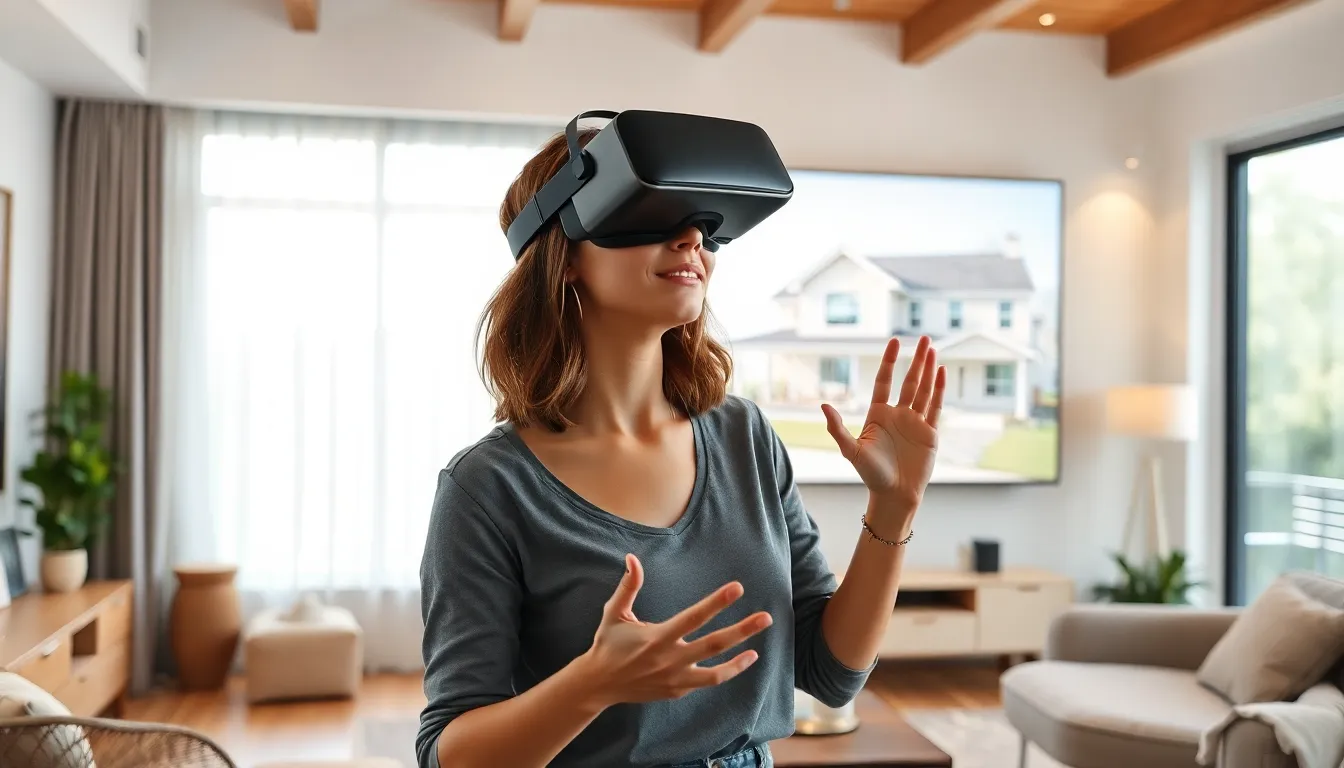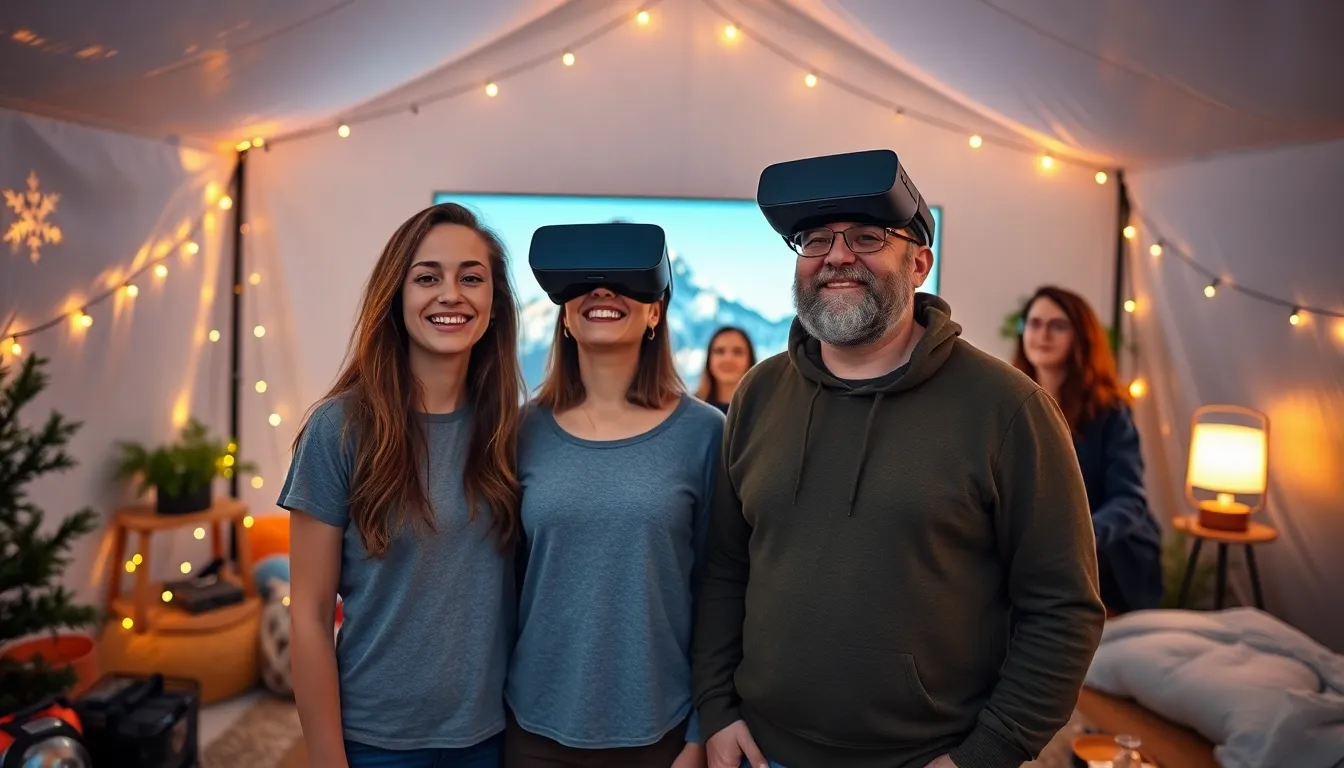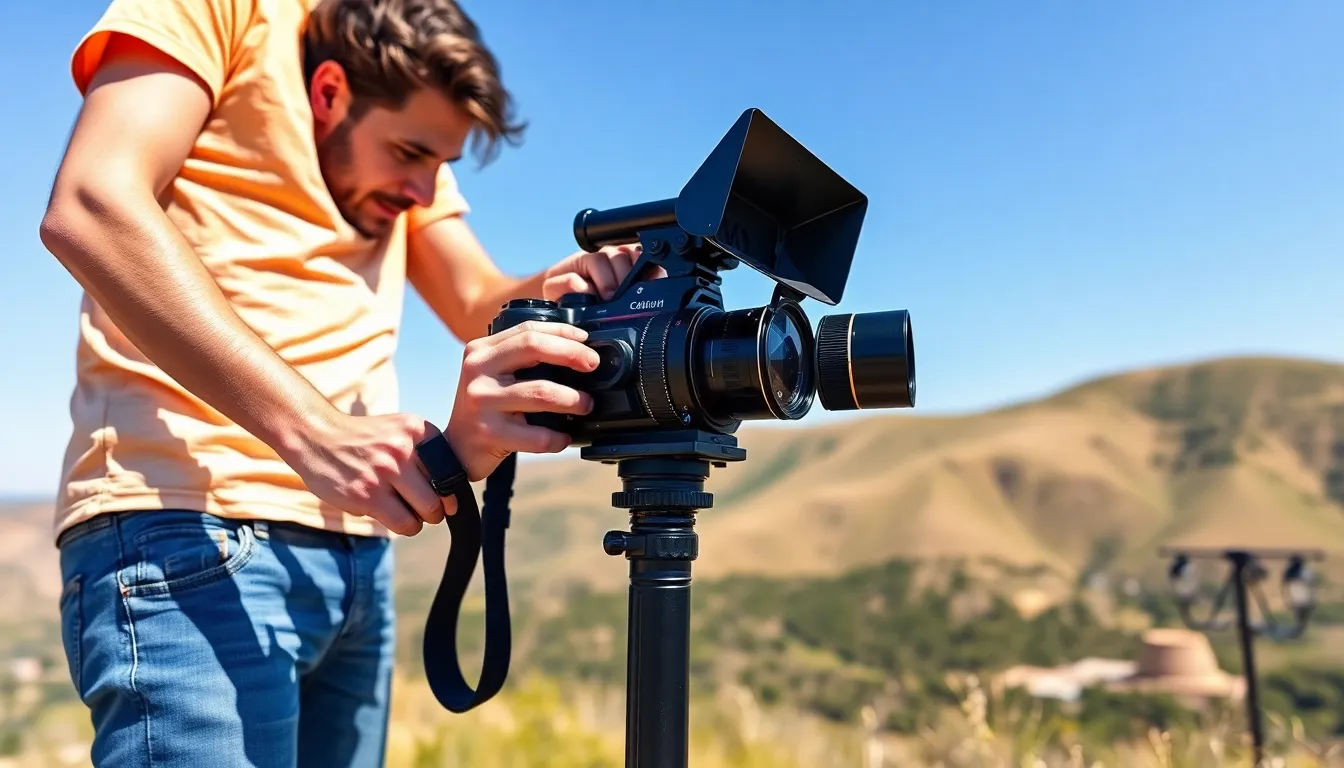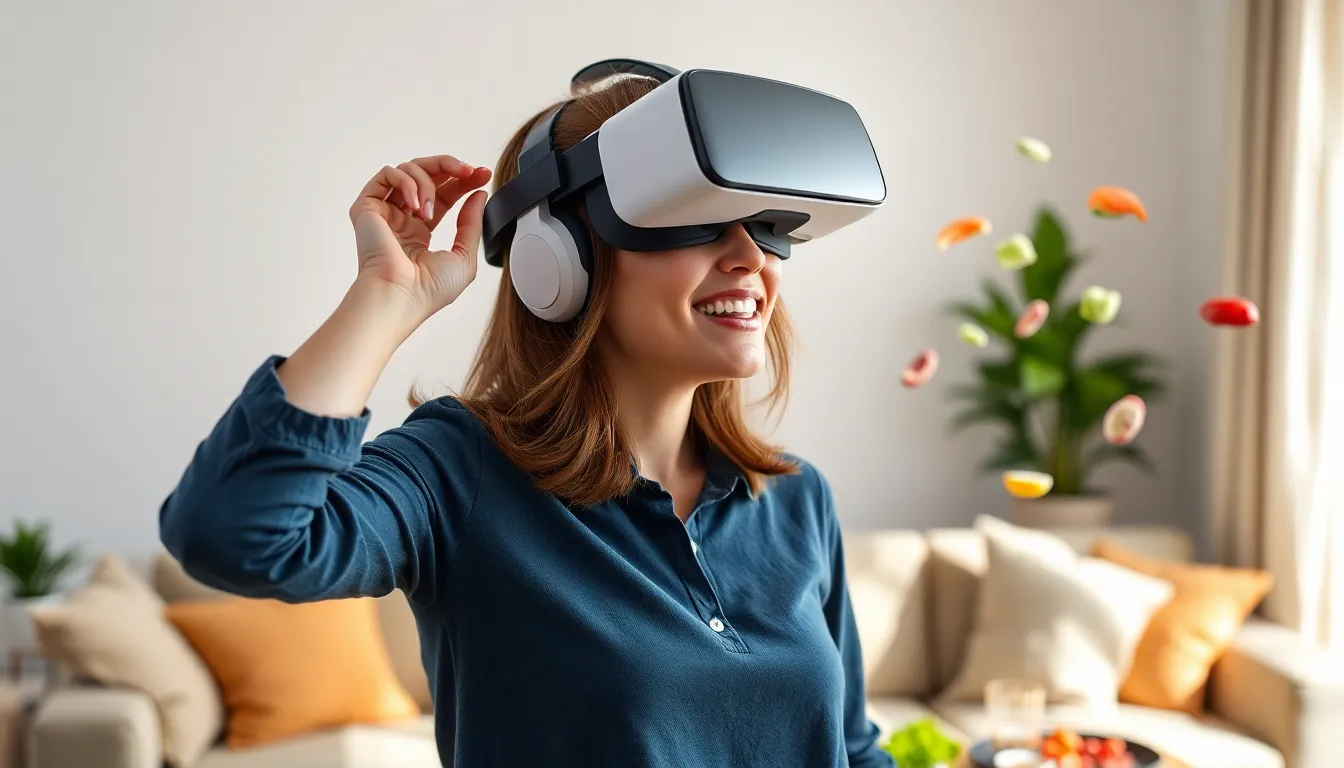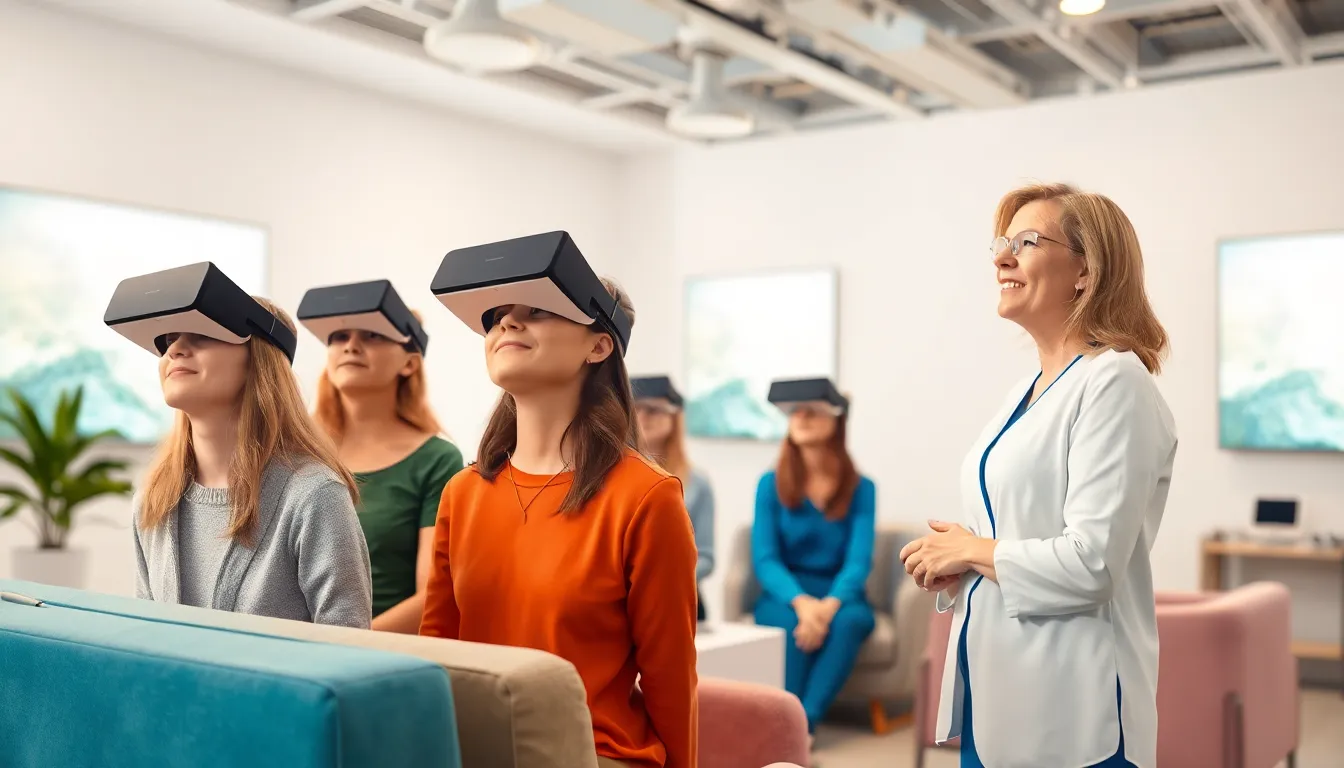Table of Contents
ToggleImagine stepping into a home without leaving your couch. Welcome to the world of VR real estate, where virtual tours replace traditional open houses and buyers can explore properties in their pajamas. This innovative technology is shaking up the real estate market, making it easier and more fun to find that dream home.
Overview of VR Real Estate
Virtual reality (VR) in real estate enables immersive experiences for buyers. This technology enhances property views, making homes more relatable and inviting. Agents use VR tools to showcase listings, allowing prospective buyers to explore spaces in 3D.
Interactive features within VR let users customize elements like paint colors or furniture arrangements. Such personalization fosters a sense of ownership and connection to the property. Enhanced realism in VR simulations helps buyers visualize dimensions and layouts effectively.
Many companies now offer VR tours as standard practice. By integrating these experiences into their services, real estate professionals attract tech-savvy clients. These immersive tours can reduce the time and resources spent on physical showings.
Statistics show that properties displayed using VR sell 10% faster than those without it. Increased engagement leads to higher conversion rates, benefiting agents and sellers. Additionally, VR lowers geographical barriers, enabling remote buyers to access properties worldwide.
Potential buyers now can experience multiple listings in a single day with minimal effort. Simulated open houses allow users to move through various properties from their homes. VR real estate provides a convenient, effective alternative to traditional methods.
Benefits of VR in Real Estate
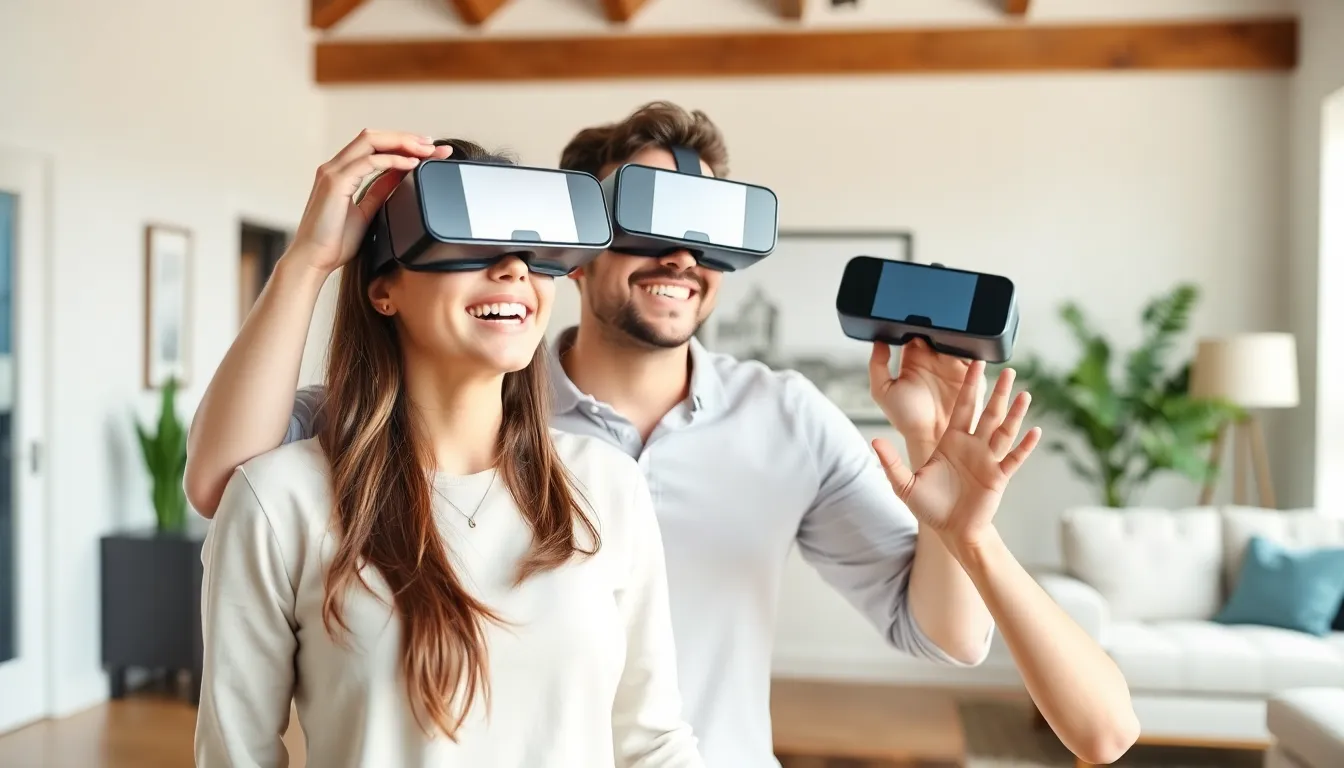
VR technology offers significant advantages for the real estate sector. It enhances how buyers interact with properties while simplifying the home-search process.
Enhanced Visualization
Buyers gain a clearer understanding of properties through VR simulations. Immersive 3D models allow individuals to explore layouts and dimensions effectively. Property features come alive, showcasing details that photographs can’t capture. Buyers can visualize potential designs and alterations, fostering emotional investment. Such realistic representations help bridge the gap between imagination and reality. As a result, properties feel more inviting and relatable, leading to informed buying decisions.
Increased Accessibility
Geographical barriers diminish with VR in real estate. Remote buyers access listings across the globe, exploring properties they might not physically visit. Multiple virtual tours fit into a single day, saving time for busy clients. Real estate agents cater to diverse audiences, appealing to tech-savvy individuals who prefer online experiences. Enhanced accessibility leads to increased engagement with listings. Statistics show that properties utilizing VR attract a broader range of potential buyers, heightening overall interest.
Challenges in Implementing VR Real Estate
Implementing VR in real estate presents various challenges that stakeholders must navigate.
Cost Considerations
Expensive equipment forms a significant barrier for many agents and agencies. VR headsets, software licenses, and high-quality cameras incur high costs. While some agencies may see a return on investment, others hesitate to allocate budgets to new technology. Additionally, ongoing maintenance and updates demand continued financial commitment. Agents might feel the pressure of upgrading their equipment to stay competitive, impacting their operational budget. Funding training for staff on how to use VR tools adds another layer of financial consideration. Market research shows that investing in effective VR technologies can enhance sales, yet initial costs may deter many.
Technical Limitations
Technical limitations hinder the widespread adoption of VR in real estate. Not every client has access to necessary hardware or adequate internet connectivity. Compatibility issues often arise with various devices, causing inconsistent user experiences. Some VR applications face glitches that can disrupt virtual tours, leading to frustration for both agents and buyers. Agents may struggle to provide technical support, further complicating the user experience. Moreover, creating high-quality, realistic 3D models involves time and expertise, which can limit agent resources. Addressing these challenges requires ongoing technical development and support to enhance user engagement.
Case Studies of VR Real Estate Applications
Virtual reality (VR) applications in real estate are notable across several property sectors. These case studies illustrate the effectiveness of VR in enhancing buyer experiences and improving sales.
Residential Properties
In the residential market, VR technology allows prospective buyers to explore homes without needing physical visits. Companies like Matterport create detailed 3D models, enabling virtual tours that provide immersive viewing experiences. Buyers can engage with spaces interactively, from adjusting lighting to changing wall colors. For instance, a significant listing in San Francisco utilized VR tours, resulting in a 20% increase in showings. This method helps emotional connections develop, increasing buyer interest and leading to faster sales.
Commercial Properties
VR also plays a pivotal role in commercial real estate. Developers and agents use VR to present spaces like office buildings and retail centers. Tools such as Enscape enable realistic presentations of properties, showcasing layouts and design elements efficiently. During a notable project, an office space in New York attracted multiple offers after a successful VR showcase, emphasizing the appeal of visualizing large commercial spaces. The ability to walk through these properties virtually aids decisions for businesses, making VR an invaluable asset in commercial real estate marketing.
Future Trends in VR Real Estate
Emerging trends in VR real estate enhance user experiences and expand market reach. Increased adoption of augmented reality (AR) complements VR, allowing property developers and agents to merge digital elements with real-world settings. This combination offers buyers innovative ways to visualize potential spaces.
Furthermore, integration of artificial intelligence (AI) with VR explores personalized property recommendations. These tailored suggestions ensure a more efficient search experience, saving buyers time and increasing satisfaction. Data-driven insights from user interactions provide real estate professionals with valuable feedback, helping them refine their approaches.
The future of VR in real estate places a strong emphasis on mobile accessibility. Users increasingly prefer accessing property tours via smartphones or tablets. By optimizing VR platforms for mobile devices, real estate agents can reach wider audiences, engaging buyers who favor on-the-go solutions.
Partnerships between real estate firms and tech companies also contribute to future advancements. These collaborations aim to create more immersive experiences through consistent updates and feature enhancements. Emerging startups focused on VR technologies continue to challenge established players, pushing them to innovate further.
Statistics show that up to 70% of buyers feel more confident making decisions after experiencing a VR tour. This sentiment reflects how VR positively impacts buyer psychology. Engaging content fosters emotional connections, increasing the likelihood of conversions.
Investment in VR software development will remain vital. Affordable tools enable agents to create bespoke listings that stand out in crowded markets. Continuous education for real estate professionals on emerging technologies ensures they stay competitive in the evolving landscape.
The integration of VR in real estate is reshaping how buyers interact with properties. By offering immersive experiences and enhancing accessibility, VR is not just a trend but a vital tool for modern home buying. As technology continues to evolve, the potential for personalized and engaging property showcases will only grow.
Real estate professionals who embrace this innovation stand to benefit significantly. The ability to captivate buyers through realistic virtual tours can lead to quicker sales and increased engagement. As challenges are addressed and solutions emerge, the future of VR in real estate looks promising, paving the way for a more dynamic and efficient market.

